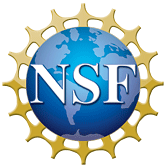Effects of enhanced downwelling of NOx on Antarctic upper-stratospheric ozone in the 21st century
To Access Resource:
Questions? Email Resource Support Contact:
-
opensky@ucar.edu
UCAR/NCAR - Library
| Resource Type | publication |
|---|---|
| Temporal Range Begin | N/A |
| Temporal Range End | N/A |
| Temporal Resolution | N/A |
| Bounding Box North Lat | N/A |
| Bounding Box South Lat | N/A |
| Bounding Box West Long | N/A |
| Bounding Box East Long | N/A |
| Spatial Representation | N/A |
| Spatial Resolution | N/A |
| Related Links |
Related Dataset #1 : NCAR CESM2-WACCM model output prepared for CMIP6 ScenarioMIP Related Dataset #2 : NCAR CESM2-WACCM model output prepared for CMIP6 CMIP historical |
| Additional Information | N/A |
| Resource Format |
PDF |
| Standardized Resource Format |
PDF |
| Asset Size | N/A |
| Legal Constraints |
Copyright author(s). This work is licensed under a Creative Commons Attribution-NonCommercial 4.0 International License. |
| Access Constraints |
None |
| Software Implementation Language | N/A |
| Resource Support Name | N/A |
|---|---|
| Resource Support Email | opensky@ucar.edu |
| Resource Support Organization | UCAR/NCAR - Library |
| Distributor | N/A |
| Metadata Contact Name | N/A |
| Metadata Contact Email | opensky@ucar.edu |
| Metadata Contact Organization | UCAR/NCAR - Library |
| Author |
Maliniemi, V. Nesse Tyssøy, H. Smith-Johnsen, C. Arsenovic, P. |
|---|---|
| Publisher |
UCAR/NCAR - Library |
| Publication Date | 2021-07-21T00:00:00 |
| Digital Object Identifier (DOI) | Not Assigned |
| Alternate Identifier | N/A |
| Resource Version | N/A |
| Topic Category |
geoscientificInformation |
| Progress | N/A |
| Metadata Date | 2025-07-11T16:13:45.450903 |
| Metadata Record Identifier | edu.ucar.opensky::articles:24571 |
| Metadata Language | eng; USA |
| Suggested Citation | Maliniemi, V., Nesse Tyssøy, H., Smith-Johnsen, C., Arsenovic, P., Marsh, Daniel. (2021). Effects of enhanced downwelling of NOx on Antarctic upper-stratospheric ozone in the 21st century. UCAR/NCAR - Library. https://n2t.org/ark:/85065/d7q81hhq. Accessed 07 December 2025. |
Harvest Source
- ISO-19139 ISO-19139 Metadata

